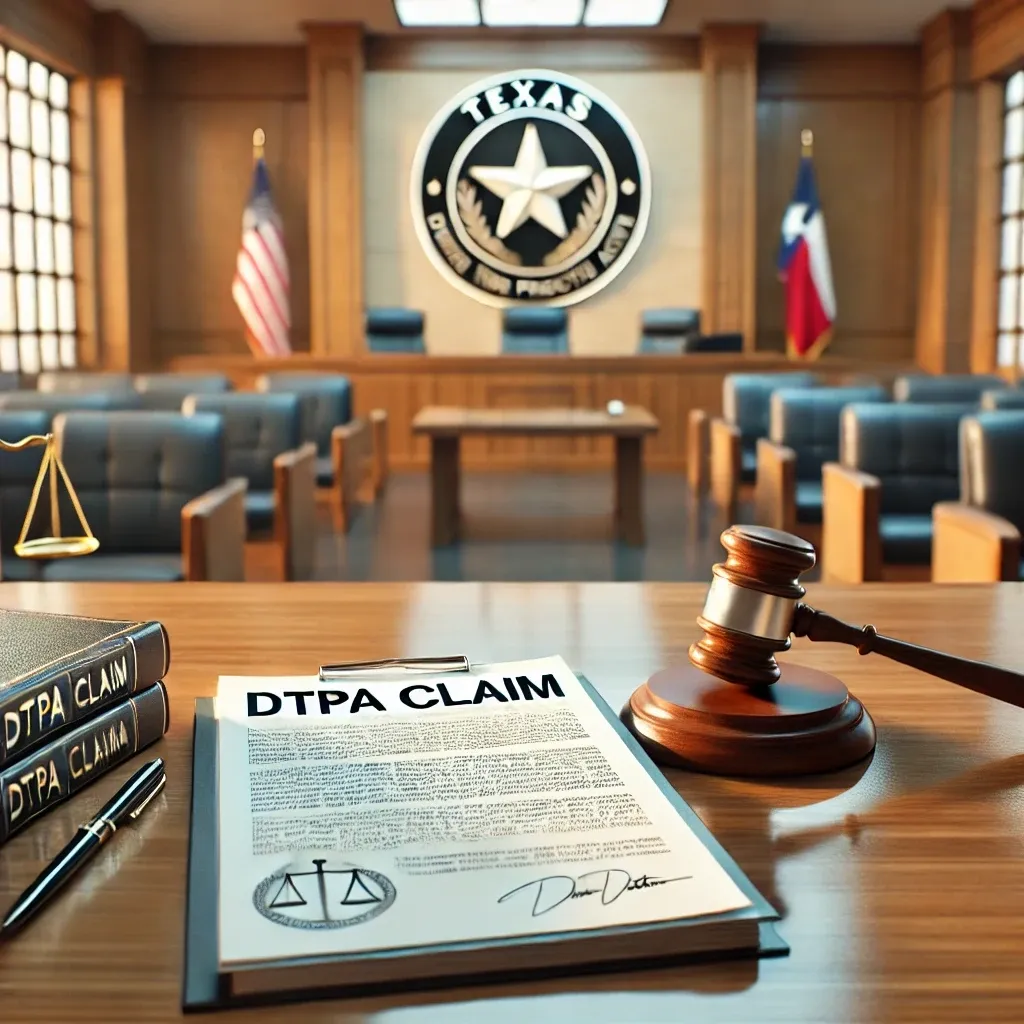The Texas Deceptive Trade Practices Act (DTPA) is a critical piece of consumer protection legislation designed to protect Texas residents from unfair, deceptive, and fraudulent business practices. Enacted in 1973 and regularly updated, the DTPA empowers consumers to file claims against businesses that engage in misleading or unethical conduct in trade, services, or commerce. Understanding the DTPA is essential for Texas consumers who may face deceptive business practices, as it offers a strong legal recourse for recovering damages.
In this article, we’ll explore what the DTPA entails, how it protects Texas consumers, what qualifies as a DTPA claim, and how The Woodlands Law Firm can help you navigate your rights under this law.
Overview of the Texas DTPA
The Texas DTPA is outlined in Chapter 17 of the Texas Business and Commerce Code, often called the “Texas Consumer Protection Act.” The DTPA aims to protect consumers by prohibiting false, misleading, or deceptive acts in the marketplace. These protections apply to both goods and services, covering a broad range of purchases from household items to real estate and professional services.
Under the DTPA, a “consumer” is defined as someone who seeks or acquires, by purchase or lease, goods or services. Thus, if you fall within this definition and encounter deceptive practices, you may have grounds for a claim.
What Constitutes a DTPA Claim?
To successfully bring a DTPA claim, consumers must demonstrate that:
- They qualify as consumers under the act.
- The defendant committed a prohibited act under the DTPA.
- The prohibited act caused economic or personal damages.
Texas courts have ruled that individuals, partnerships, and corporations may qualify as consumers under the DTPA. However, to succeed, the plaintiff must show they purchased or leased a good or service from the defendant, and that the misrepresentation or deception harmed them in a quantifiable way.
Consumer Protections Under the DTPA
The DTPA provides a range of protections that allow consumers to pursue damages for:
- Economic Losses: Compensation for out-of-pocket expenses resulting from the deceptive trade practice.
- Mental Anguish: In cases of “knowing” or “intentional” conduct, consumers may recover damages for emotional distress.
- Exemplary Damages: When a business knowingly violates the DTPA, the consumer can receive up to three times their actual damages, known as “treble damages.”
Consumers should know that DTPA claims have a two-year statute of limitations from the date of the deceptive act or when the consumer reasonably should have discovered the misconduct.
Types of Violations Covered
The DTPA includes a “Laundry List” of over 25 violations that qualify as deceptive trade practices. Some of the most common violations under the DTPA include:
- False Advertising: Making false claims about a product or service.
- Unconscionable Actions: Conduct that takes advantage of a consumer’s lack of knowledge or bargaining power.
- Breach of Warranty: Failing to uphold written or implied guarantees regarding a product or service.
- Misrepresentation of Goods or Services: Providing misleading information regarding the quality, origin, or characteristics of a good or service.
The DTPA also extends to certain other areas of consumer protection, like misrepresentations by real estate agents, failure to disclose pertinent facts about a transaction, or deceptive acts by insurance companies.
Filing a DTPA Claim: Steps and Requirements
Filing a DTPA claim involves several steps to ensure that the case is well-founded and in compliance with Texas law. Here is an overview of the process:
Step 1: Send a Demand Letter
Before filing a lawsuit, the consumer must issue a demand letter to the business, outlining the complaint, the specific DTPA violations,
and the desired remedy. The business then has 60 days to respond, potentially to settle the claim.
Step 2: Gather Evidence
Consumers should collect relevant evidence, including receipts, emails, advertisements, warranties, or other documents that support
their claim. Documenting phone calls and keeping a timeline of events can also strengthen a case.
Step 3: File a Lawsuit
If the business fails to respond or settle, the consumer can proceed with a lawsuit under the DTPA. The consumer can recover economic
damages, potentially emotional distress damages, and even exemplary damages in severe cases.
Step 4: Attend Court Proceedings
Once a lawsuit is filed, both parties will attend court hearings, where the consumer’s legal team presents the evidence and argues the
case. With the right legal support, consumers can make a compelling case and have a high chance of recovering damages.
How The Woodlands Law Firm Can Help
Understanding the Texas DTPA is the first step to protecting your rights as a consumer. If you believe a business has wronged you, The Woodlands Law Firm can help you assess whether you have a valid claim, gather the necessary evidence, and file a compelling case.
Call Us for a Free 15-Minute Consultation!
If you’ve been a victim of deceptive business practices, don’t hesitate to reach out for help. The Woodlands Law Firm offers a free initial consultation to discuss your case and explore your options under the Texas DTPA. Call us at 832-626-0116, email admin@woodlands.law, or book online at https://link.woodlands.law/book.

Leave a Reply